Potala Palace in Lhasa
The Potala Palace in Lhasa is not only a spectacular architectural feat but also an emblematic symbol of Tibetan culture and history. Perched on Marpo Ri hill at an altitude of over 3,700 meters, this massive structure dominates the Lhasa skyline with its striking appearance and grand scale. The palace was originally constructed in the 7th century by King Songtsen Gampo and later expanded in the 17th century by the 5th Dalai Lama, who used it as the winter residence for successive Dalai Lamas.
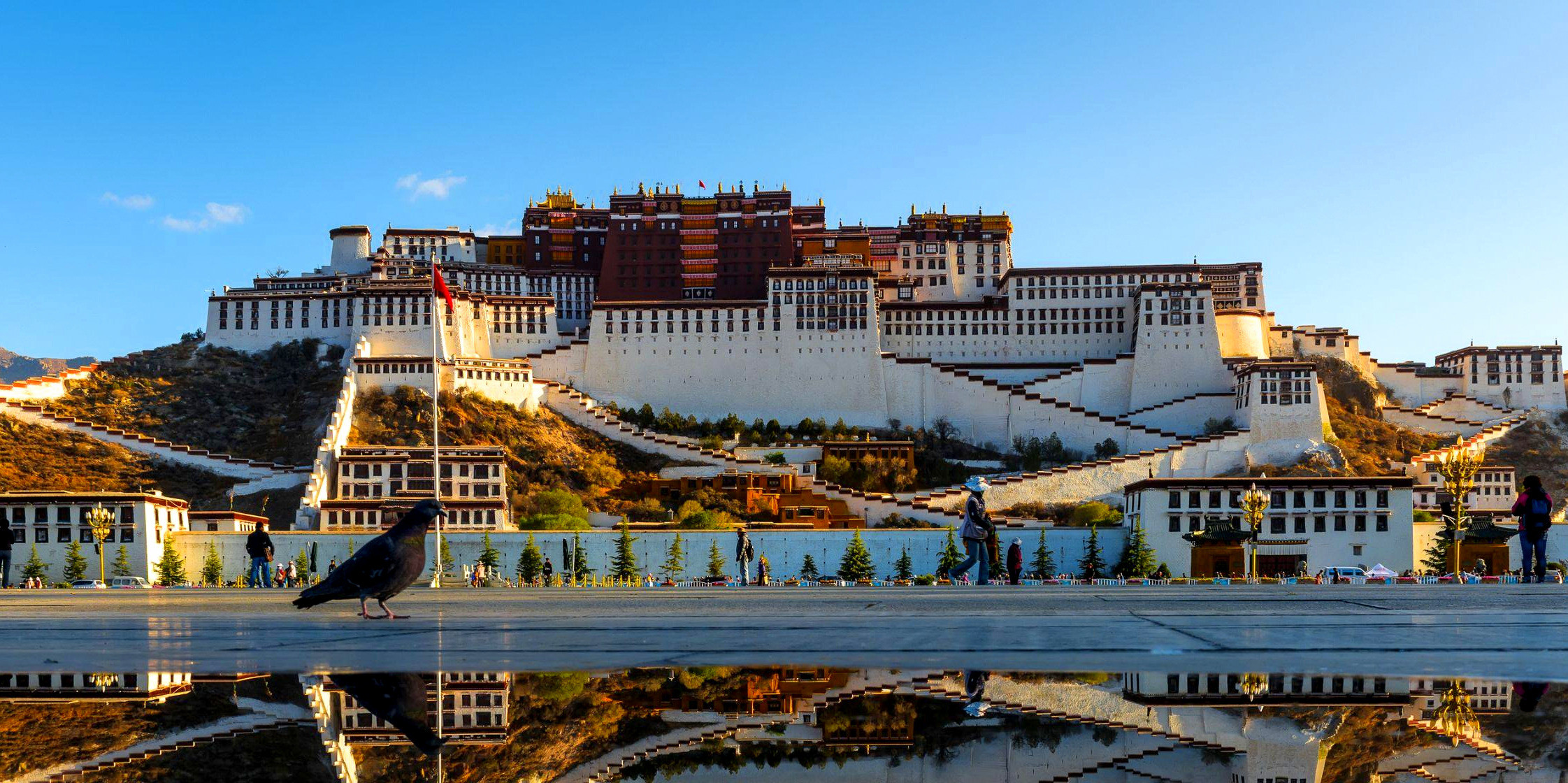
-
Architectural Significance: The Potala Palace is renowned for its unique design that blends Tibetan, Indian, and Chinese architectural styles. The complex is divided into two main parts: the White Palace, which served as the administrative quarters, and the Red Palace, which is devoted to religious study and Buddhist prayer. The entire structure is made up of over a thousand rooms, encompassing temples, halls, libraries, and living quarters, each adorned with intricate murals, traditional Tibetan thangkas, and exquisite statues.
-
Cultural and Historical Importance: As the former government seat and winter residence of the Dalai Lama, the Potala Palace is a profound cultural and spiritual symbol in Tibet. It houses numerous relics and artifacts, including sacred Buddhist texts, ceremonial objects, and gifts received from Chinese emperors and other dignitaries. The palace is also the final resting place for several past Dalai Lamas, whose stupas are ornately decorated with gold, diamonds, and precious stones.
-
Tourism and Conservation: Recognized as a UNESCO World Heritage Site since 1994, the Potala Palace is one of the most visited attractions in Tibet. Due to its historical importance and vulnerability, strict preservation measures are in place to protect the structure from damage. Visitors are typically limited in number, and there are restrictions on how long they can stay inside to help preserve the integrity of the site.
-
Visiting the Potala Palace: For tourists planning to visit, it’s advisable to book tickets in advance due to the daily cap on visitor numbers. The climb to the palace is steep and requires some physical exertion, especially considering the high altitude. However, the panoramic views of Lhasa and the spiritual and historical richness found inside make the effort immensely rewarding.
The Potala Palace stands as a monumental testament to Tibet's religious devotion and its complex history, offering an unparalleled glimpse into the heart of Tibetan Buddhism and its cultural heritage.
Mount Everest Base Camp (North Face)
Mount Everest Base Camp on the north face, located in Tibet, offers a unique and thrilling adventure for trekkers and mountaineers from around the world. Unlike its more commercialized counterpart on the south side in Nepal, the north face base camp in Tibet provides a more remote and less crowded experience, making it an appealing alternative for those seeking a different perspective of the highest peak on Earth.
.jpg)
-
Access and Location: The north face of Everest, known as the Tibetan side, is accessed through China. Visitors usually start their journey in Lhasa or Shigatse, traveling by road to the Rongbuk Monastery, which is the highest monastery in the world and serves as a gateway to the base camp. The drive itself offers breathtaking views of the Tibetan Plateau and a glimpse into the rural lifestyles of the region.
-
The Trekking Experience: From Rongbuk Monastery, trekkers can either hike or take a short drive to the actual base camp. The trek is not as strenuous as the trek to the south base camp in Nepal, making it accessible to a broader range of physical fitness levels. However, the high altitude of over 5,200 meters (about 17,060 feet) at the base camp still presents a significant challenge and requires proper acclimatization.
-
Scenic Highlights: The north face of Everest presents some of the most dramatic views of the mountain. The stark and rugged landscape, characterized by rocky terrain and glacial structures, contrasts sharply with the lush greenery found on the Nepalese side. Trekkers at the north base camp are treated to an imposing view of the north face of Everest, which offers a more technical and challenging climb, hence fewer attempts and ascents than the south face.
-
Permits and Regulations: Traveling to the north face base camp requires several permits, including a Tibet Travel Permit, an Alien’s Travel Permit, and a Military Permit. These are typically arranged by tour operators as part of the travel package to Tibet. It's essential to go through a registered tour agency, which will handle all the logistical arrangements, including permits, transportation, and accommodation.
-
Best Time to Visit: The ideal times to visit the north face Everest Base Camp are from April to June and September to October. During these months, the weather is relatively stable and clear, providing the best conditions for trekking and panoramic views of Everest.
Visiting the north face of Mount Everest Base Camp is not only about seeing the world's highest peak up close but also about experiencing the unique culture of Tibet’s remote regions. It’s a less trodden path that offers solitude, breathtaking natural beauty, and a deeper appreciation of the challenges faced by mountaineers attempting to conquer Everest from the north.
Lake Namtso
Lake Namtso, often referred to as the "Heavenly Lake," is one of the most breathtaking natural landmarks in Tibet. Situated at an altitude of around 4,718 meters (15,479 feet) above sea level, it is one of the highest saltwater lakes in the world and the second-largest saltwater lake in China. The lake is nestled between the towering Nyenchen Tanglha Mountains, which provide a stunning backdrop to the crystal-clear waters of Namtso, creating a scene of unparalleled natural beauty.
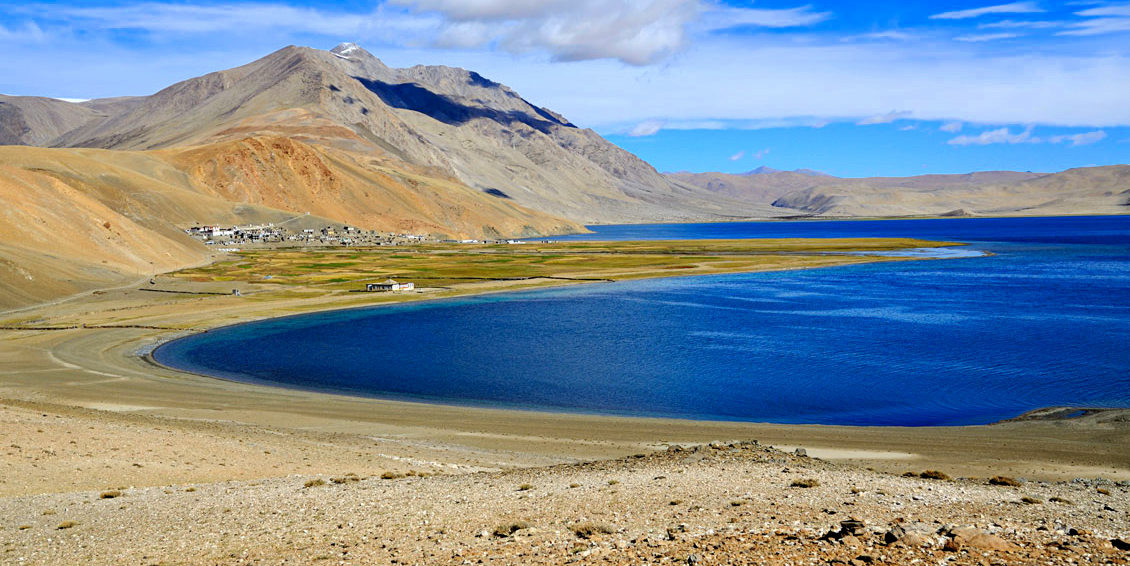
-
Spiritual Significance: Lake Namtso holds great spiritual importance in Tibetan Buddhism and is considered a sacred site. According to local beliefs, Namtso is the seat of the bodhisattva of compassion. Every year, during the Tibetan Year of the Sheep, pilgrims from across Tibet trek to the lake for the auspicious occasion when the ice melts, and the pilgrimage path around the lake becomes accessible.
-
Natural Features: The lake covers an impressive area of over 1,900 square kilometers (734 square miles) and features five uninhabited islands of varying sizes. These islands used to be the hermitages for monks who would walk to them when the lake was frozen. Namtso's crystal blue waters and the vast sky above are a mesmerizing sight, with stunning sunrises and sunsets that paint the lake in vibrant hues.
-
Wildlife and Environment: The area around Lake Namtso is a haven for wildlife, including migratory birds, yak herds, and various species of wild animals that roam the grasslands. The lake itself is an important bird area, supporting a variety of bird species, including bar-headed geese and brown-headed gulls.
-
Visiting Lake Namtso: The journey to Lake Namtso is an adventure in itself, involving a drive through rugged mountain terrain and past traditional Tibetan villages. The lake is usually visited as part of a tour, which can include camping overnight near the lake's shores. The best time to visit Lake Namtso is from May to October, during the warmer months when the roads are clear of snow and the temperatures are more conducive to exploring the outdoors.
-
Activities and Experiences: Visitors to Lake Namtso can engage in a variety of activities such as hiking around the lake, photography, meditation, and simply soaking in the peaceful atmosphere of this sacred place. The serene environment and the spiritual aura of the lake make it a perfect destination for those seeking solitude and reflection.
Lake Namtso's majestic beauty and spiritual significance make it a must-visit destination in Tibet, offering visitors a profound connection with nature and an insight into Tibetan spiritual practices.
Jokhang Temple
Jokhang Temple, located in the heart of Lhasa, is not only the most sacred and important temple in Tibet but also an unrivaled symbol of Tibetan Buddhism. Founded in the 7th century by King Songtsen Gampo to house the statues of Buddha that were brought as dowries by his Nepalese and Chinese queens, Jokhang Temple has since become the focal point of spiritual pilgrimage in Tibet.
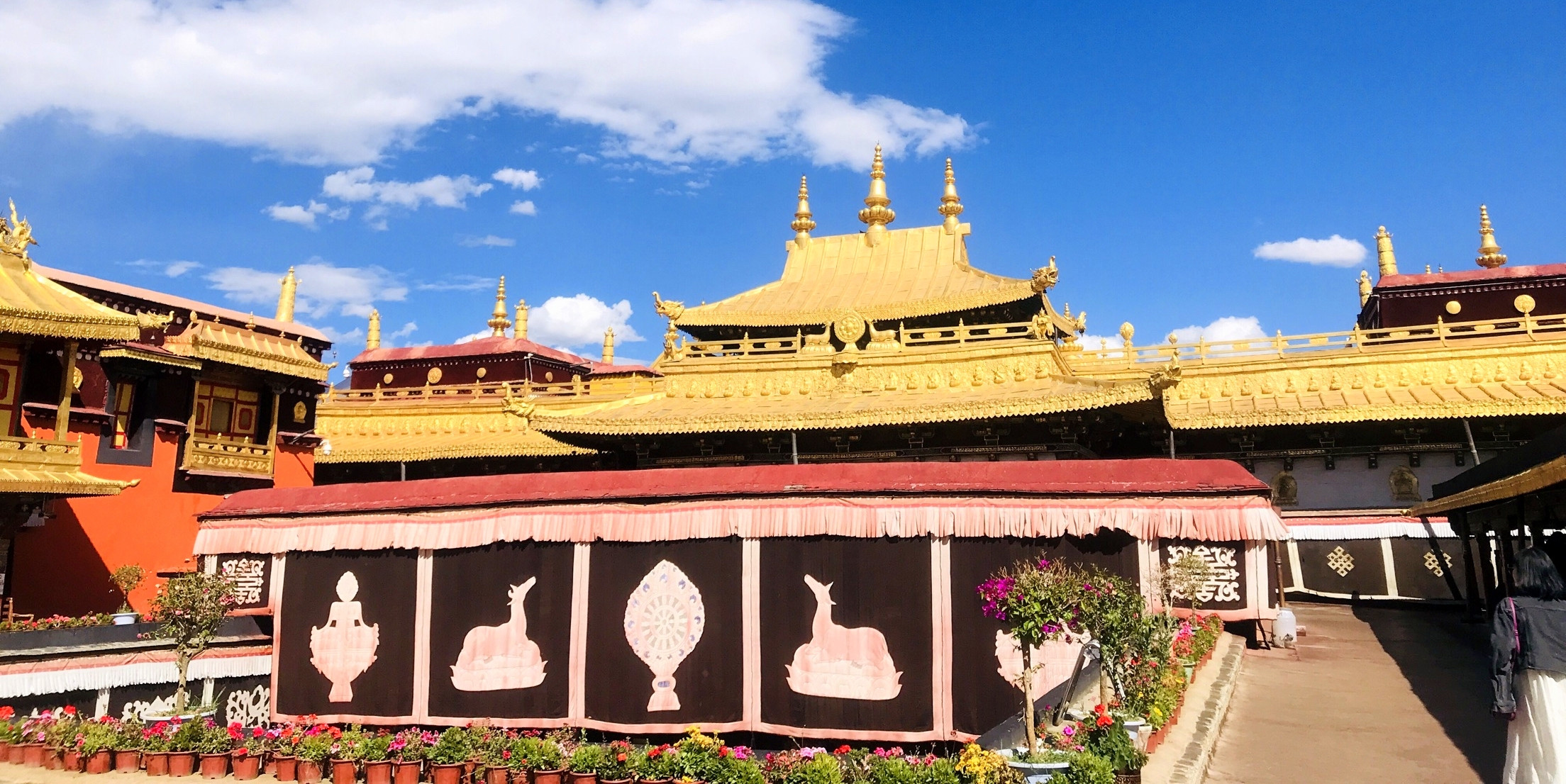
-
Architectural and Historical Significance: The temple showcases a mix of Indian vihara design, and Tibetan, and Nepalese architectural techniques, creating a unique aesthetic that has evolved through centuries of expansions and renovations. Its intricate wood carvings and metalwork, along with the gilded bronze tiles of its roofs, reflect the rich craftsmanship of the Tibetan people. The temple complex is centered around the sacred statue of Jowo Rinpoche, the most venerated and beautiful image of Buddha, believed to have been crafted during the Buddha’s lifetime.
-
Spiritual Center: Jokhang Temple's spiritual significance stems from its status as the spiritual center of Lhasa and its position within the practice of the Buddhist pilgrimage circuit in the Barkhor Street market surrounding it. Pilgrims from all over Tibet come to Jokhang to prostrate in devotion in the large square in front of the temple, engaging in kora (circumambulation) and spinning prayer wheels as acts of piety.
-
Cultural Importance: The temple is also a repository of Tibetan cultural and religious history, adorned with murals, statues, and tapestries that tell stories from the life of Buddha, as well as various aspects of Tibetan history. The atmosphere inside Jokhang is intensely spiritual, with the murmur of mantras, the scent of juniper incense, and the glow of butter lamps creating a meditative space for visitors and worshippers alike.
-
Visiting Jokhang Temple: For tourists, visiting Jokhang offers a profound glimpse into Tibetan culture and religious practice. The best times to visit are during the early morning or late afternoon when the temple is less crowded, and one can observe the religious rituals more closely. Photography inside the temple is restricted, respecting the sacred nature of the site.
-
Cultural Events: The temple also serves as a crucial center during major Tibetan Buddhist festivals, such as Losar (Tibetan New Year) and Monlam (Great Prayer Festival), where the temple becomes a hub of activities, prayers, and rituals, providing visitors with a deeper understanding of Tibetan religious practices.
Jokhang Temple is a cornerstone of Tibetan identity and spirituality, offering an unparalleled window into the devotion and religious practices that have shaped Tibet for centuries. Visiting Jokhang is essential for anyone wishing to truly experience and understand the heart and soul of Tibet.
Tashilhunpo Monastery
Tashilhunpo Monastery, located in Shigatse, the second-largest city in Tibet, is one of the most important monasteries in Tibetan Buddhism. Founded in 1447 by the First Dalai Lama, Gendun Drup, it has been the traditional seat of successive Panchen Lamas, who are considered among the most important religious figures in Tibetan Buddhism after the Dalai Lama.
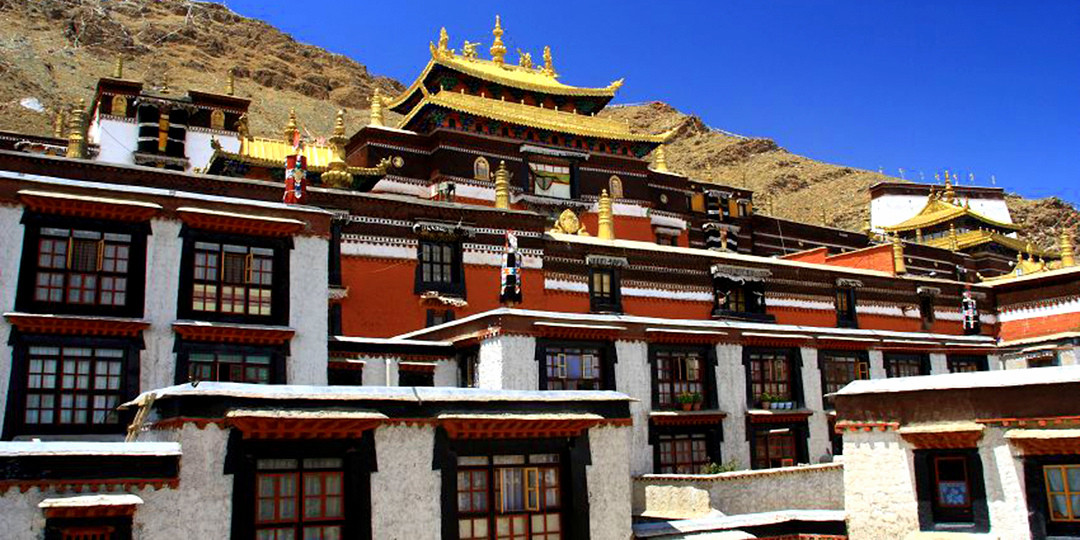
-
Architectural Grandeur: The monastery itself sprawls over a vast area and is a striking example of traditional Tibetan monastic architecture. Its buildings are constructed against the backdrop of the Nyima Mountain, creating a visually stunning image with their golden roofs shining against the rugged landscape. The complex comprises a series of chapels, living quarters, and learning institutions, and is dominated by the massive Maitreya Chapel. This chapel houses a gigantic statue of the Maitreya Buddha, which is one of the largest gilded statues in the world and a major draw for pilgrims and tourists.
-
Cultural and Religious Significance: Tashilhunpo Monastery is not only a center of spiritual learning but also a repository of vast cultural wealth. It holds a vast collection of thankas, sutras, and other religious and artistic treasures accumulated over centuries. The monastery is active, with hundreds of monks residing and studying there, continuing the traditions of ritual, scholarship, and debate that have been associated with it for centuries.
-
Festivals and Rituals: One of the key highlights of visiting Tashilhunpo is witnessing the religious festivals that take place here, particularly the annual Buddha Unfolding Festival. During this festival, a giant thangka of the Buddha is displayed on the monastery’s towering wall, attracting thousands of pilgrims who come to receive blessings. This event is a vibrant spectacle of faith, featuring ritual dances, elaborate costumes, and a general atmosphere of devotion and celebration.
-
Visiting Tashilhunpo: For travelers, the monastery offers a profound insight into Tibetan Buddhism's practices and its pivotal role in the religious and cultural life of Tibet. Visitors can explore the courtyards, temples, and the impressive Kelsang Temple, which houses the tombs of previous Panchen Lamas adorned with gold and precious stones.
-
Best Time to Visit: The best time to visit Tashilhunpo Monastery is during the early morning when you can observe the monks engaging in their daily prayers and rituals. Visiting during a festival period, although more crowded, offers a deeper look into the cultural richness of Tibetan Buddhism.
Tashilhunpo Monastery remains a place of immense religious importance and a beacon of Tibetan culture, making it a must-visit for anyone seeking to deepen their understanding of Tibetan spiritual and cultural traditions.
Samye Monastery
Samye Monastery holds a special place in Tibetan Buddhism as the first Buddhist monastery built in Tibet. Established in the 8th century under the patronage of King Trisong Detsen, Samye Monastery is not just a religious site but also a monumental symbol of the introduction of Buddhism into Tibet from India. The monastery is located in the Dranang Valley, approximately 30 kilometers from Tsedang, and is accessible via a scenic drive along the Yarlung Tsangpo River.
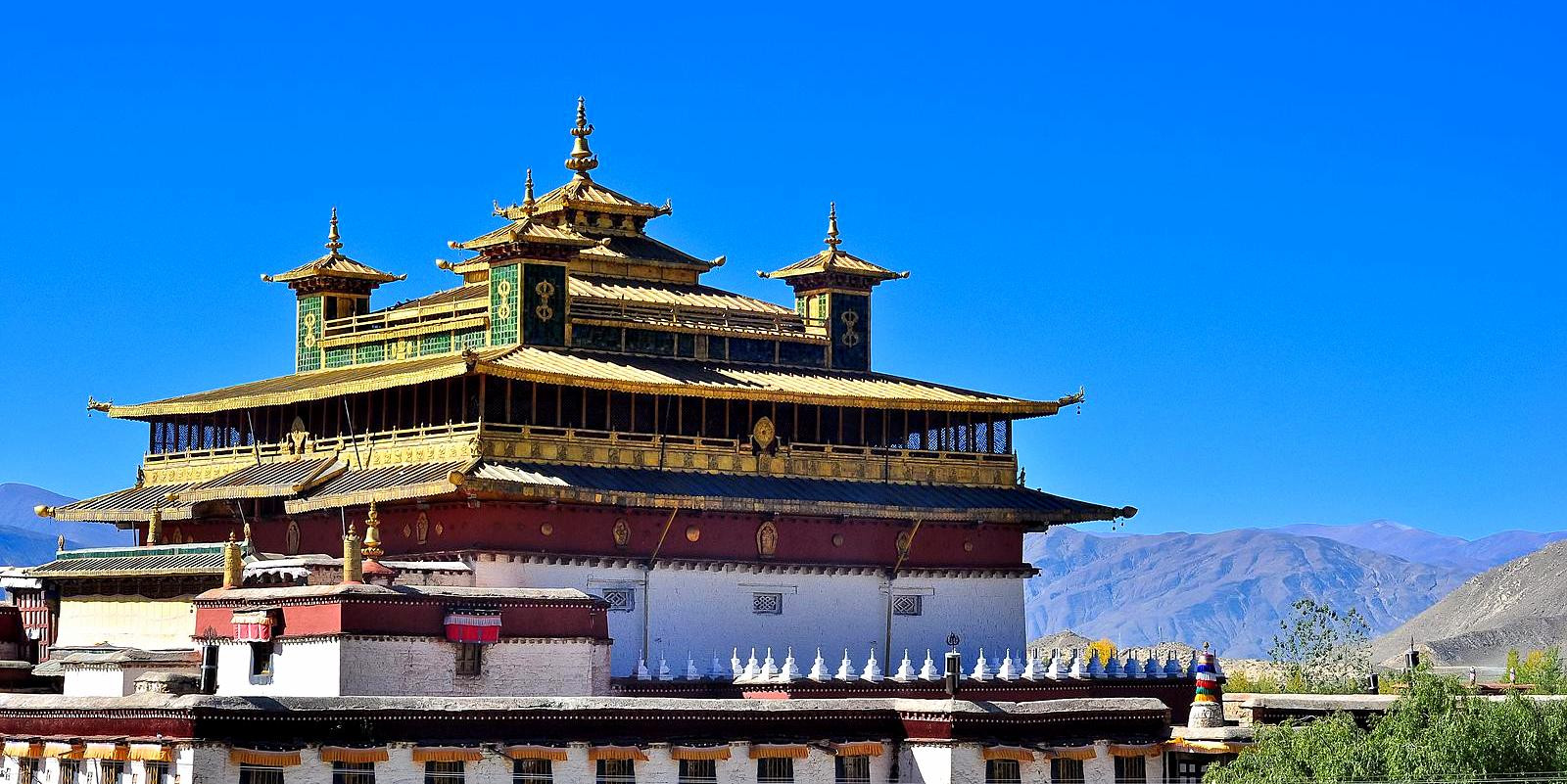
-
Architectural Significance: What makes Samye Monastery unique is its design, which is said to represent the Buddhist universe. The central temple, known as Utse, symbolizes Mount Meru, the center of the universe. The temple is surrounded by a wall, with gates facing the four directions, and is adorned with a series of smaller temples that represent continents and oceans in Buddhist cosmology. The blend of Indian, Tibetan, and Chinese architectural styles reflects the cultural and religious exchanges that occurred during its construction.
-
Cultural and Historical Importance: The monastery is not only a center for spiritual activities but also a repository of Tibetan religious art and historical manuscripts. It has played a pivotal role in the development of Tibetan Buddhism, hosting numerous debates and scholarly activities that shaped the course of Tibetan religious philosophy.
-
Pilgrimage Site: Samye Monastery is a popular pilgrimage destination for Tibetan Buddhists. The circumambulation of the entire complex is a common ritual, reflecting the monastery’s significance in religious practices. The complex's layout, with its numerous stupas and prayer wheels, facilitates a journey that is both physically engaging and spiritually enriching.
-
Visiting Samye Monastery: The experience of visiting Samye Monastery is immersive, as it offers insights into the early stages of Buddhism in Tibet and its evolution over the centuries. Visitors can explore the various halls, which are filled with intricate murals, statues, and thangkas that tell stories from Buddhist lore. The view from the rooftop of the main temple provides a panoramic view of the surrounding valley and mountains, enhancing the spiritual ambiance of the site.
-
Best Time to Visit: The best times to visit Samye Monastery are during the spring and autumn months when the weather is pleasant, making it ideal for exploration and participation in outdoor religious activities. Additionally, visiting during a religious festival can be particularly rewarding, offering a deeper insight into the vibrant rituals and community practices of Tibetan Buddhism.
Samye Monastery remains a profound testament to the spiritual and historical richness of Tibet, offering visitors a unique glimpse into the foundational era of Tibetan Buddhism and its continuing legacy.
Yarlung Tsangpo Grand Canyon
The Yarlung Tsangpo Grand Canyon, known as the deepest canyon in the world, represents one of the most spectacular natural wonders in Tibet. Carved by the Yarlung Tsangpo River, this canyon stretches over 500 kilometers (about 310 miles) and reaches depths of more than 5,000 meters (over 16,400 feet) in some sections, surpassing even the famous Grand Canyon in the United States in terms of depth.
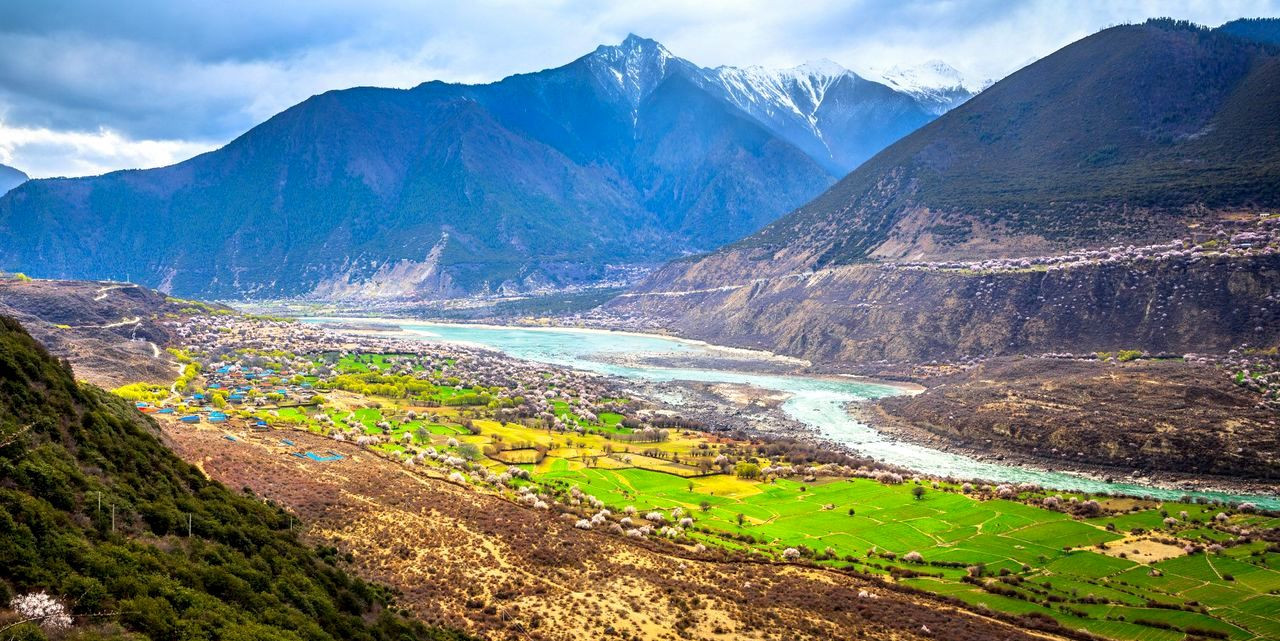
-
Geological and Natural Features: The Yarlung Tsangpo Grand Canyon is not just deep; it's also renowned for its breathtaking vistas, diverse ecosystems, and extreme weather patterns. The region is home to a wide variety of flora and fauna, some of which are endemic to Tibet. The steep cliffs and isolated terrain have helped preserve unique habitats that are still relatively unexplored scientifically.
-
Cultural Significance: This area holds great significance for the local Tibetan communities. The river itself is considered sacred and is associated with numerous legends and spiritual stories. The surrounding region is dotted with monasteries and retreat sites that reflect the deep spiritual connection the local people have with this landscape.
-
Adventure and Exploration: For adventurers and nature lovers, the Yarlung Tsangpo Grand Canyon offers unparalleled opportunities for exploration. The challenging terrains and remote trails provide thrilling trekking, hiking, and camping experiences. The canyon's rugged beauty and the relative lack of commercial development make it an ideal destination for those looking to escape the more tourist-trodden paths and experience a more authentic side of Tibet.
-
Best Time to Visit: The best times to visit the Yarlung Tsangpo Grand Canyon are during the spring and autumn months. During these times, the weather is more stable, and the temperatures are conducive for trekking and exploration. The summer months can bring heavy rains, which may make the river and canyon dangerous, while winter conditions are typically harsh and challenging.
-
Visiting and Safety Considerations: Given its remote location and extreme environment, visiting the Yarlung Tsangpo Grand Canyon requires careful planning and preparation. Visitors are strongly advised to go with experienced guides who know the area well. It's also essential to have the proper gear and to be physically prepared for the demands of exploring one of the world's deepest canyons.
The Yarlung Tsangpo Grand Canyon is not only a test of physical endurance and adventurous spirit but also a profound way to connect with the natural majesty and cultural richness of Tibet. Its untouched natural beauty and spiritual significance make it a truly unique and rewarding destination for those fortunate enough to visit.
Mt. Kailash and Lake Manasarovar
Mt. Kailash and Lake Manasarovar, located in the remote western region of Tibet, form one of the most revered spiritual sites in Asia. This area is unique in that it is sacred to several religions: Hinduism, Buddhism, Jainism, and the indigenous Bon faith. For thousands of years, pilgrims from these diverse traditions have traveled great distances to circumambulate the mountain and bathe in the lake, activities believed to bring spiritual benefits such as cleansing sins and aiding in achieving enlightenment.
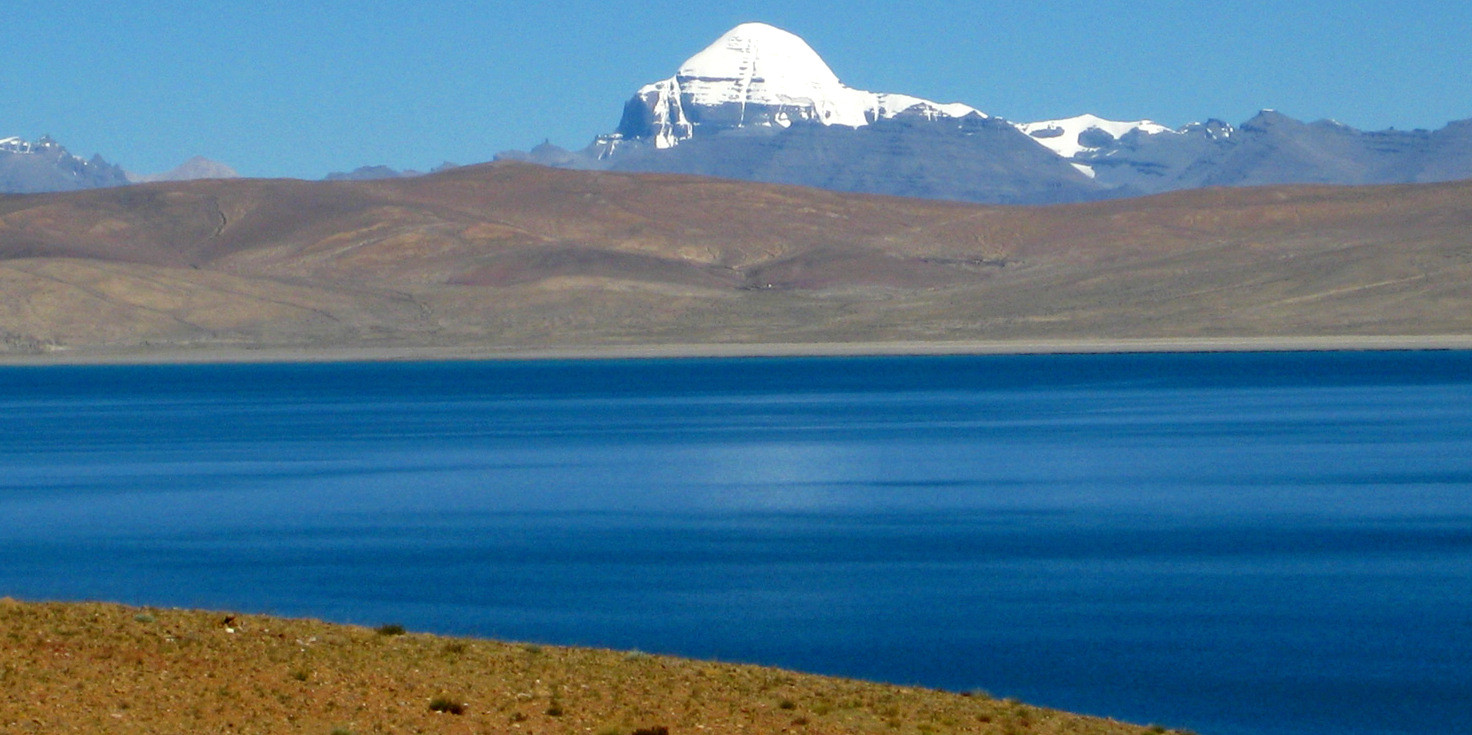
-
Mt. Kailash: Standing at an elevation of 6,638 meters (21,778 feet), Mt. Kailash is not particularly notable for its height in the region of towering Himalayas, but its distinct, symmetrical, and pristine shape sets it apart as a spiritually significant site. It is considered the physical embodiment of the mythical Mount Meru, the center of the universe in Hindu, Buddhist, and Jain cosmology. The mountain is so sacred that climbing it is forbidden, and no known attempts to summit it have ever been made.
-
Lake Manasarovar: Just to the south of Mt. Kailash lies Lake Manasarovar, one of the highest freshwater lakes in the world, located at about 4,590 meters (15,060 feet). The lake is renowned for its strikingly clear blue water juxtaposed against the scenic backdrop of the surrounding mountains. It is believed that the waters of the lake are capable of cleansing one of all sins.
-
Spiritual and Cultural Significance: The Kailash Manasarovar region is immensely significant for its spiritual potency. Pilgrims believe that making the arduous journey to circumambulate Mt. Kailash and bathe in the waters of Lake Manasarovar will bring them closer to ultimate liberation. The trek around Mt. Kailash, known as the Kora, is a 52-kilometer journey that typically takes three days and is known for both its physical and spiritual challenges.
-
Visiting Mt. Kailash and Lake Manasarovar: The journey to these holy sites is not for the faint-hearted due to the harsh conditions and high altitude. It requires careful planning and acclimatization, as the area is only accessible by foot or on horseback. The best time to visit is from May to October when the weather conditions are more favorable. During this time, the Sutlej, Brahmaputra, and Karnali rivers, which have their sources near this region, also contribute to the stunning scenery.
-
Environmental and Access Considerations: The region is protected and has strict regulations to maintain its sanctity and ecological balance. Visitors need to be mindful of their environmental impact and respect the cultural and religious significance of the sites.
Mt. Kailash and Lake Manasarovar represent not just physical geographical features but a profound spiritual journey that transcends the boundaries of religion, serving as a testament to the shared heritage and profound faith of different cultures. The experience of visiting these sacred sites is often described as transformative, leaving pilgrims with a sense of peace and spiritual fulfillment that is unmatched.
Rongbuk Monastery
Rongbuk Monastery, nestled amidst the stark and rugged terrain of the Himalayas, holds the distinction of being the highest monastery in the world. Situated at an elevation of about 5,000 meters (16,400 feet) near the base of the north side of Mount Everest, it offers unparalleled views of the highest peak on earth, making it a unique destination for both spiritual pilgrims and adventurous travelers.
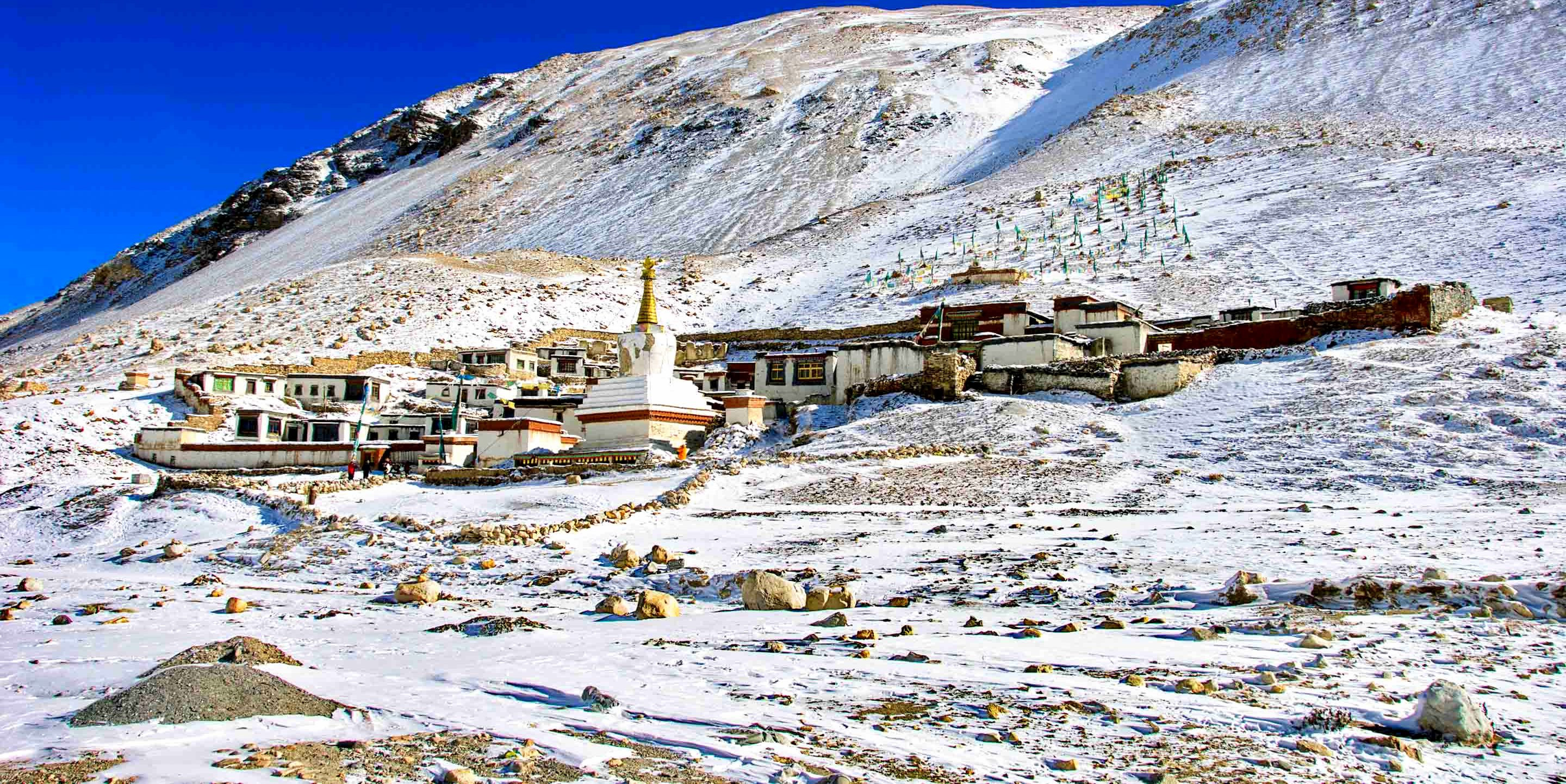
-
Historical and Cultural Significance: Founded in 1902 by the Nyingmapa Lama Ngawang Tenzin Norbu, Rongbuk Monastery has long been a site of religious importance and a hub for Buddhist meditation and scholarship. It serves as a rest stop for climbers attempting to summit Everest from the north face, integrating a blend of adventure and spirituality. The monastery is part of the Nyingma sect, the oldest sect of Tibetan Buddhism, and has been a place of solitude and retreat.
-
Architectural Features: The monastery's structure is modest and adapted to the extreme weather conditions of its high-altitude environment. Its buildings are constructed with stone and traditionally painted in bright, welcoming colors. Inside, the monastery houses shrines adorned with murals and Tibetan Buddhist thangkas that tell the stories of the Buddha's life and teachings.
-
Spiritual Atmosphere: The spiritual atmosphere at Rongbuk Monastery is palpable. Pilgrims and monks perform daily rituals and prayers, contributing to the serene and contemplative environment. The presence of Everest, known locally as Chomolungma, meaning "Mother Goddess of the World," adds to the sacredness of the monastery's location.
-
Visiting Rongbuk Monastery: Visitors to Rongbuk Monastery are treated to not only spiritual nourishment but also some of the most dramatic views available of Mount Everest. The best time to visit is from April to June and September to October when the weather is clearer and the temperatures are somewhat milder. The monastery offers basic accommodations for travelers, providing a unique opportunity to stay in this remote location and experience the daily life of a high-altitude monastic community.
-
Environmental Considerations: Given its sensitive environment, visitors to Rongbuk Monastery are encouraged to practice responsible tourism. This includes respecting local customs and religious practices, managing waste properly, and minimizing environmental impact.
The experience of visiting Rongbuk Monastery is truly awe-inspiring, combining deep spiritual heritage with breathtaking natural beauty. It is a place where the spiritual and the earthy connect beneath the gaze of Mount Everest, offering a profound sense of peace and perspective to all who make the journey.
Gyantse
Gyantse is a small but historically significant town in the Tibet Autonomous Region, known for its well-preserved medieval Tibetan charm. Once a major hub for trade routes between Tibet, Bhutan, India, and Nepal, Gyantse has retained much of its historical architecture and traditional lifestyle, making it a captivating destination for those interested in Tibetan culture and history.
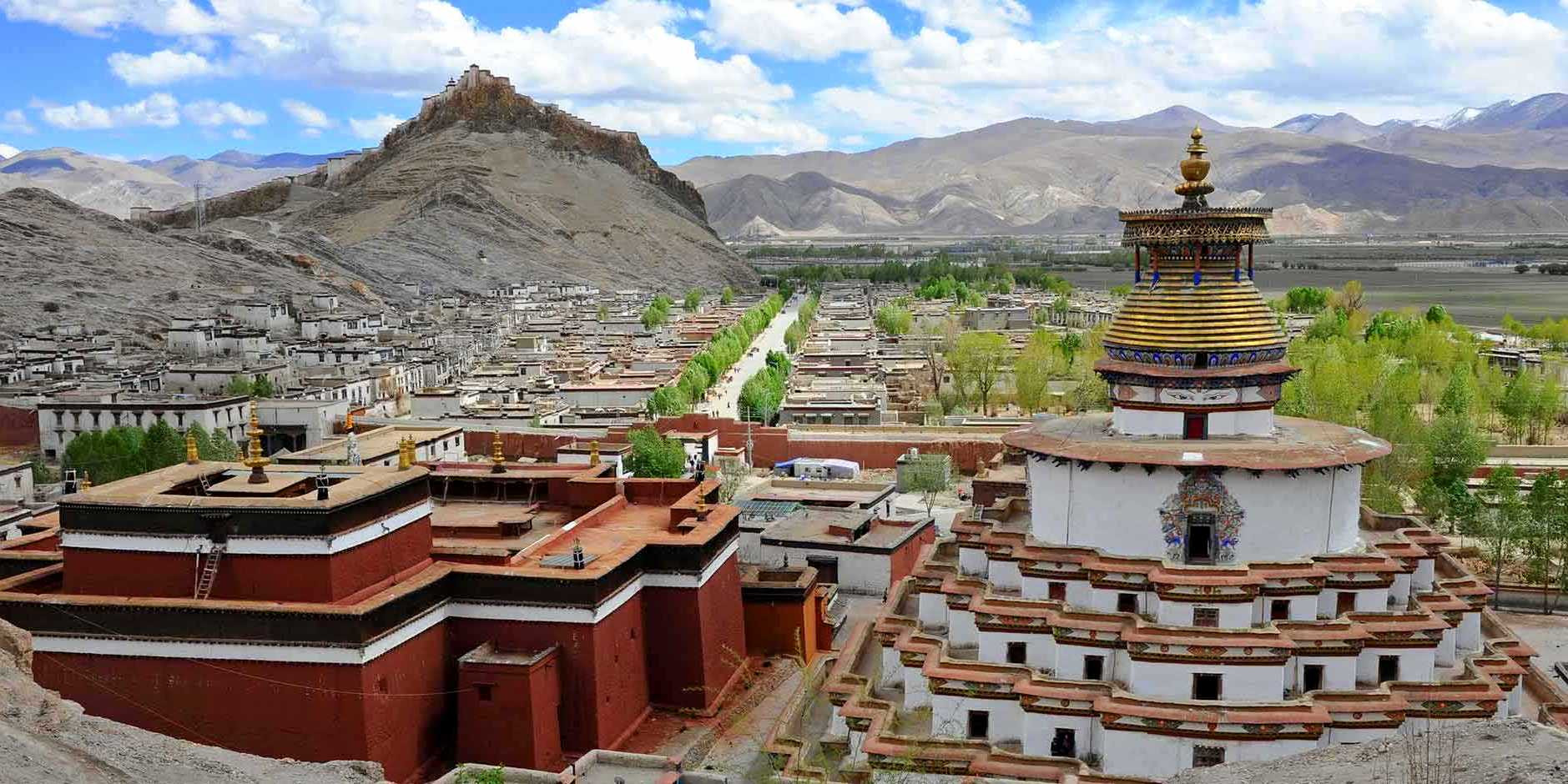
Key Attractions
-
Gyantse Dzong: This large fortress, which looms over the town, offers panoramic views of the surrounding valleys and the town below. Built in the 14th century, Gyantse Dzong is a testament to the town’s historical strategic importance and is famous for its role during the British invasion of Tibet in 1904. Visitors can explore the old watchtowers and the remains of the ancient administrative quarters within its walls.
-
Kumbum Stupa (Pelkor Chode Monastery): Adjacent to the Gyantse Dzong, this monastery is renowned for its Kumbum, which means "100,000 images" in Tibetan. The Kumbum Stupa is an architectural marvel, a multi-storied aggregate of chapels that is crowned with a golden dome. Inside, it houses an incredibly rich array of Tibetan Buddhist murals and statues, making it one of the most exquisite examples of 15th-century Newari art brought from Nepal.
-
Palcho Monastery: This monastery is unique in that it houses shrines and chapels belonging to different sects of Tibetan Buddhism, including the Gelugpa, Sakyapa, and Bhuton sects, showcasing the religious tolerance and multicultural history of Gyantse.
-
Cultural Experience: Gyantse’s charm also lies in its bustling streets filled with friendly locals and traditional Tibetan homes. The town offers a glimpse into the authentic Tibetan way of life, less influenced by tourism compared to larger cities like Lhasa. The annual Gyantse Horse Racing and Archery Festival, held in the summer, is a major event that draws crowds from across Tibet and showcases traditional sports and cultural displays.
-
Visiting Gyantse: Traveling to Gyantse involves a scenic journey through some of Tibet's most beautiful landscapes, including vast plains and high mountain passes dotted with prayer flags. The town itself is a crucial stop on the friendship highway that links Kathmandu, Nepal with Lhasa, Tibet, making it accessible yet quaintly isolated.
-
Best Time to Visit: The best time to visit Gyantse is from April to October when the weather is mild and most suitable for exploring the town and its surrounding areas. This period also coincides with several local festivals, providing visitors with an in-depth look at the rich cultural tapestry of the region.
Gyantse remains a jewel of Tibetan culture, offering an immersive experience into a way of life that has remained largely unchanged over centuries. It's a must-visit for anyone looking to delve deep into Tibet's history and traditions away from the more commercialized tourist paths.
Tips for Best Places to Explore in Tibet
Exploring Tibet, with its rich history, spiritual depth, and breathtaking landscapes, is a truly unique experience. Here are some practical tips to help you make the most of your journey to some of the best places in Tibet:
-
Acclimatize Properly: Tibet's high altitude can pose a serious risk of altitude sickness. Spend a few days in Lhasa or a similar elevation to get used to the altitude before heading to higher locations like Mount Everest Base Camp or Lake Namtso.
-
Travel Permits: Tibet is a region where travel can be heavily regulated. Ensure that you have all the necessary permits. A Tibet Travel Permit is required for entry into Tibet, and additional permits like the Alien's Travel Permit and Military Permit are needed for travel to restricted areas. Coordinate with a reliable tour operator to manage these logistics.
-
Respect Local Customs: Tibetan culture is deeply spiritual and has many customs that should be respected. For example, when visiting temples, always walk clockwise around them and prayer wheels. Dress modestly, and always ask permission before taking photographs of people.
-
Best Time to Visit: The best time to explore Tibet is from April to October. During these months, the weather is more favorable, and the major festivals occur, offering deeper insight into the local culture and traditions.
-
Health Precautions: Bring any necessary medications with you, as pharmacies in remote areas may not stock everything you need. Sunscreen, lip balm, and moisturizers are essential to combat the dry and sunny climate. Also, drink plenty of water to stay hydrated, which can help mitigate altitude sickness.
-
Pack Appropriately: The weather in Tibet can change quickly, so it's essential to pack layers. Include warm clothing even if you visit in summer, as temperatures can drop significantly at night. Don’t forget sturdy hiking boots if you plan to trek.
-
Sustainable Travel Practices: Preserve the pristine nature of Tibet’s environment by minimizing your footprint. Dispose of waste properly, use water sparingly, and respect wildlife and natural habitats.
-
Stay Connected: Mobile connectivity can be sporadic in remote areas of Tibet. Plan accordingly, especially if you need to stay in touch with family or manage work while traveling. Local SIM cards can sometimes be more reliable than roaming services.
-
Local Guides: Employing local guides not only provides you with invaluable insights into the culture and hidden gems of the region but also supports the local economy.
-
Insurance: Ensure you have travel insurance that covers high-altitude trekking and medical evacuation, which is crucial in remote areas.
By following these tips, you can enjoy a safe and enriching trip to Tibet, taking in all the mystical beauty and cultural richness this extraordinary place has to offer.
Ideal Time for Best Places to Explore in Tibet
The ideal time to visit Tibet largely depends on what you want to see and do, as the region offers different experiences throughout the year due to its varied climate. Here’s a breakdown of the best times to explore Tibet, considering weather conditions and local festivals:
Spring (April to June)
Weather: This is one of the best times to visit Tibet. The weather is starting to warm up, and there's less rain than in summer. The temperatures are comfortable, typically ranging from 10°C to 20°C (50°F to 68°F).
Visibility: The skies are generally clear, offering stunning views of the Himalayan peaks, which are still snow-capped, making for excellent photography conditions.
Activities: This period is ideal for outdoor activities such as trekking and sightseeing. The landscape begins to bloom, and the air is fresh and invigorating.
Summer (July to August)
-
Weather: Summer is the monsoon season in Tibet, so it’s wetter, but the rain usually comes in short, heavy bursts in the afternoon. It’s also the warmest time of the year, with temperatures that can rise above 20°C (68°F).
-
Crowds: This is the peak tourist season, as the weather is warm and most accessible for travel. Major Tibetan festivals, such as the Shoton Festival in Lhasa, occur during this time, drawing large crowds.
-
Considerations: Despite the rain, summer is a good time for visiting because the landscape is at its most vibrant.
Autumn (September to October)
-
Weather: Autumn rivals spring as the best season to visit Tibet. The monsoon rains taper off, leaving the air clean and the landscape fresh. Temperatures start to cool but are still pleasant, usually ranging from 10°C to 20°C (50°F to 68°F).
-
Visibility: Excellent visibility resumes, making it another great season for trekking and mountain photography.
-
Activities: This is considered one of the best times for high-altitude trekking and for visiting the Everest Base Camp, as the reduced cloud cover offers clearer views of Mount Everest.
Winter (November to March)
-
Weather: Winter in Tibet is cold, with temperatures often dropping below freezing. However, Tibet is also known as the “Land of Sunshine” because it enjoys over 3,000 hours of sunshine annually, and winter days often have clear blue skies.
-
Crowds: Fewer tourists travel to Tibet in winter, making it a good time for those who prefer a quieter visit.
-
Considerations: Some remote areas and higher altitude spots like the Everest Base Camp might be inaccessible due to snow. However, winter is an excellent time for budget travelers due to lower prices and for those interested in experiencing Tibetan New Year (Losar) celebrations.
The best times to visit Tibet are from April to June and September to October. These periods offer the most favorable weather conditions, manageable tourist crowds, and the natural beauty of Tibet at its most accessible and enjoyable.
With a rich cultural heritage, deeply rooted spirituality, and stunning scenery, Tibet provides every visitor a variety of unforgettable experiences. Every location in Tibet—from the architectural majesty of the Potala Palace in Lhasa to the hallowed elevations of the North Face Base Camp of Mount Everest—will be rich in history and mystery. The nicest times to go, spring and fall, offer the perfect circumstances for investigating these marvels in moderate temperatures and with the most visibility. Whether you seek a spiritual journey, an exciting walk, or a deep cultural immersion, Tibet promises to offer not only unusual but life-changing experiences. Tibet beckoned visitors to enter a place where the spiritual and the terrestrial meet naturally, therefore leaving a lasting impact on the heart and soul thanks to its open skies, rough terrain, and warm welcome.
FAQs for Best Places to Explore in Tibet
Q: Do I need a special permit to visit Tibet?
A: Yes, all foreign travelers need a Tibet Travel Permit in addition to a Chinese visa. These permits can only be obtained through a registered travel agency that will also arrange your tour.
Q: What is the best time of year to visit Tibet?
A: The best time to visit Tibet is from April to October when the weather is most favorable for travel, offering clear skies and milder temperatures, ideal for outdoor activities and sightseeing.
Q: How should I prepare for high altitude travel in Tibet?
A: Acclimatize to high altitudes gradually, stay hydrated, eat light but high-energy foods, and consult with a doctor before traveling to get advice on altitude sickness prevention and potentially necessary medications.
Q: What are the must-see places in Tibet?
A: Key attractions include the Potala Palace, Mount Everest's North Face Base Camp, Lake Namtso, Jokhang Temple, and Mt. Kailash. Each offers a unique experience from cultural richness to breathtaking natural landscapes.
Q: Can I travel independently in Tibet?
A: No, independent travel is not allowed in Tibet for foreign visitors. You must be part of a guided tour with a licensed tour operator who will arrange your itinerary, accommodations, and transportation.
Q: What cultural norms should I be aware of when visiting Tibet?
A: Respect local customs and religious practices. For instance, when visiting temples, dress modestly, remove your hat, and circulate clockwise around religious sites. Always ask permission before taking photos of people or religious ceremonies.
Q: Is vegetarian food easily available in Tibet?
A: Yes, vegetarian food is available, especially in larger cities and tourist areas. Many Tibetan dishes can be made without meat, and Indian restaurants are a good option for vegetarians.
Q: What should I pack for a trip to Tibet?
A: Pack layers to adjust to varying temperatures, sunscreen, sunglasses, a hat for sun protection, comfortable walking shoes, and any necessary medications. Don't forget to bring your camera and extra batteries due to the cold which can drain them quickly.
Q: How safe is it to travel in Tibet?
A: Tibet is generally safe for travelers. However, it's important to follow local laws and guidelines, stay with your tour group, and be cautious of altitude sickness and the rugged terrain, especially when trekking.
Q: Are there any restrictions on photography in Tibet?
A: Yes, photography is restricted in certain areas, especially inside monasteries and at military checkpoints. Always ask for permission before taking photographs, particularly of monks and religious sites.
For the Nepal tour, please click here.
If you are looking for different kinds of Nepal Tours or Trekking Packages, feel free to contact us.
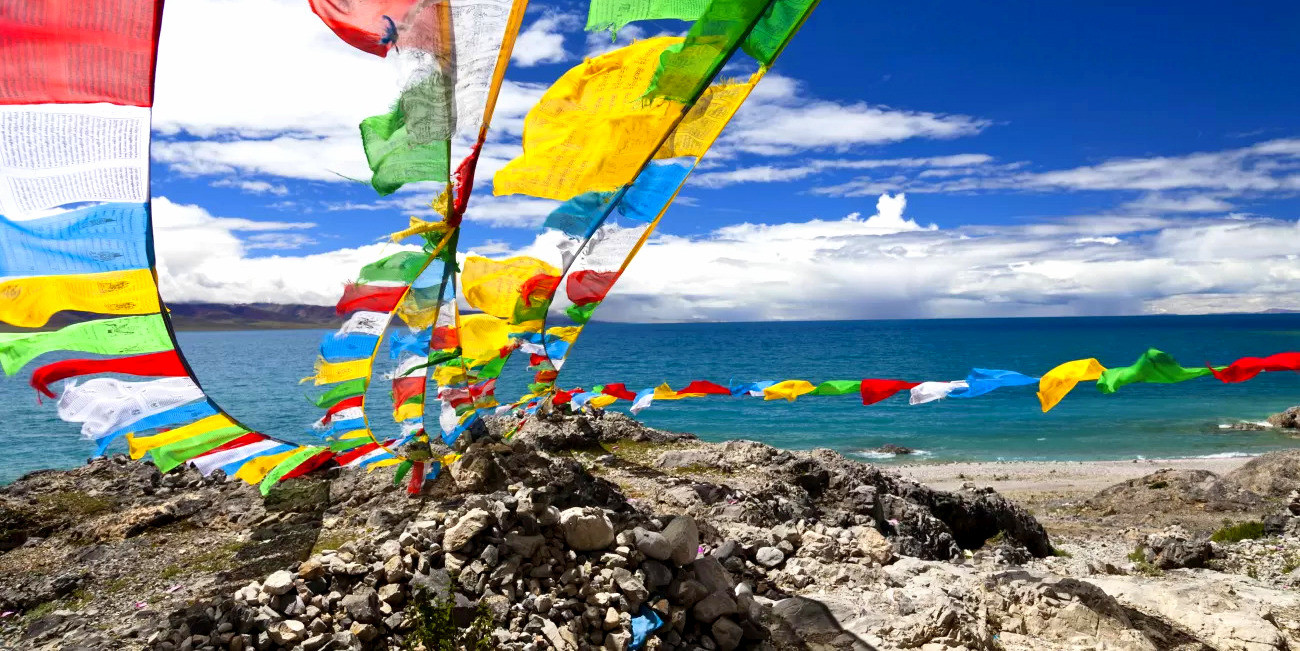


.jpg)







